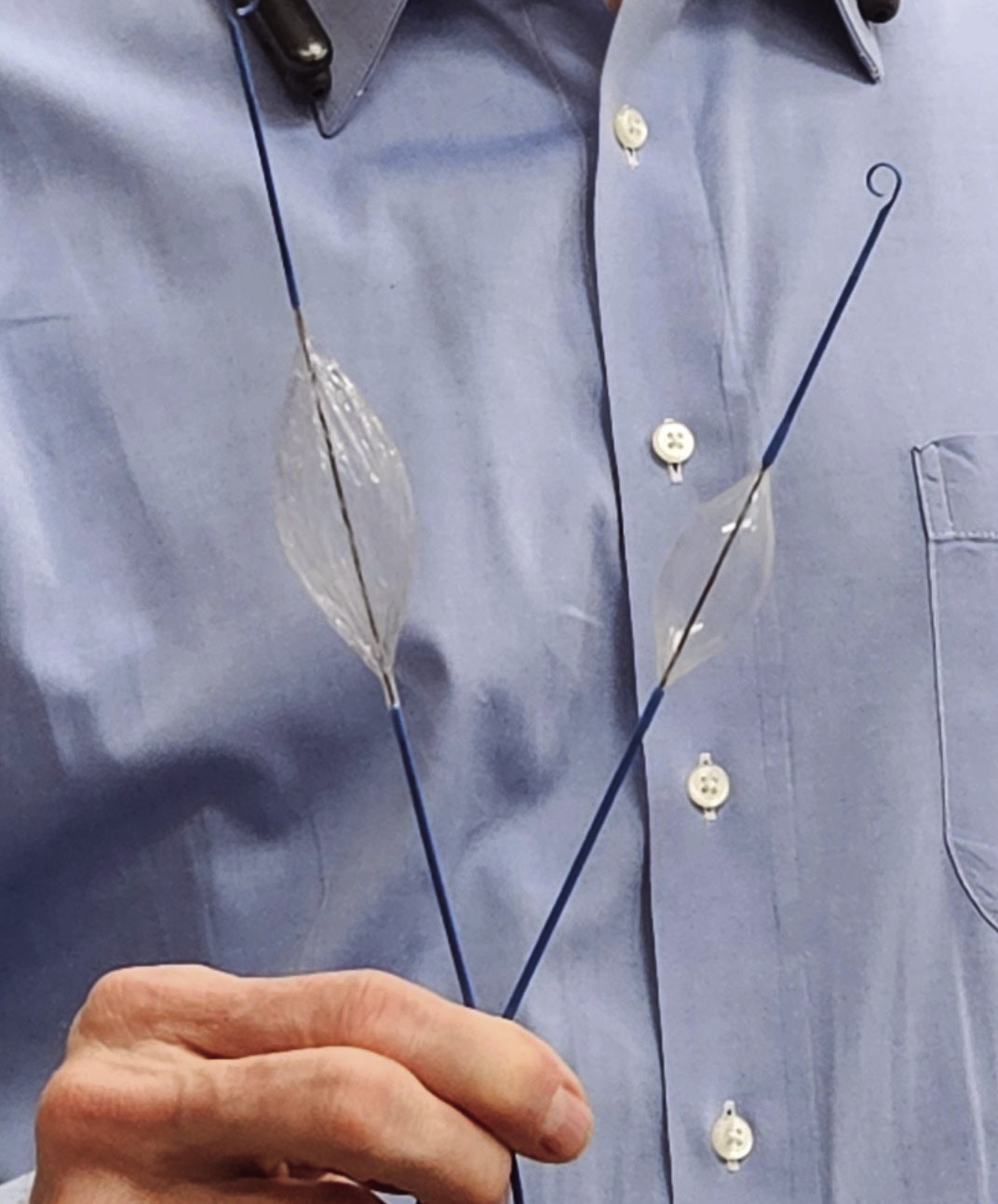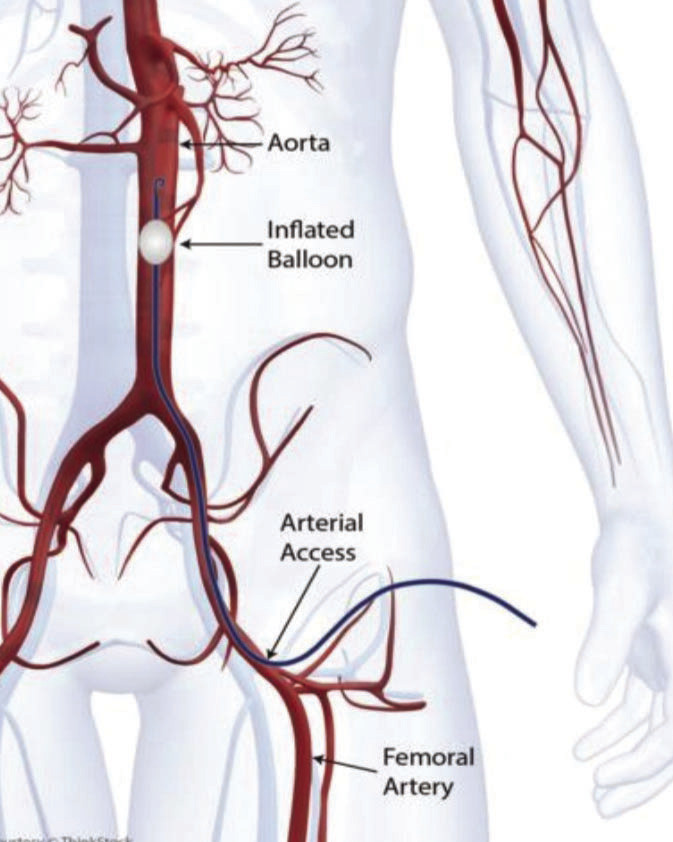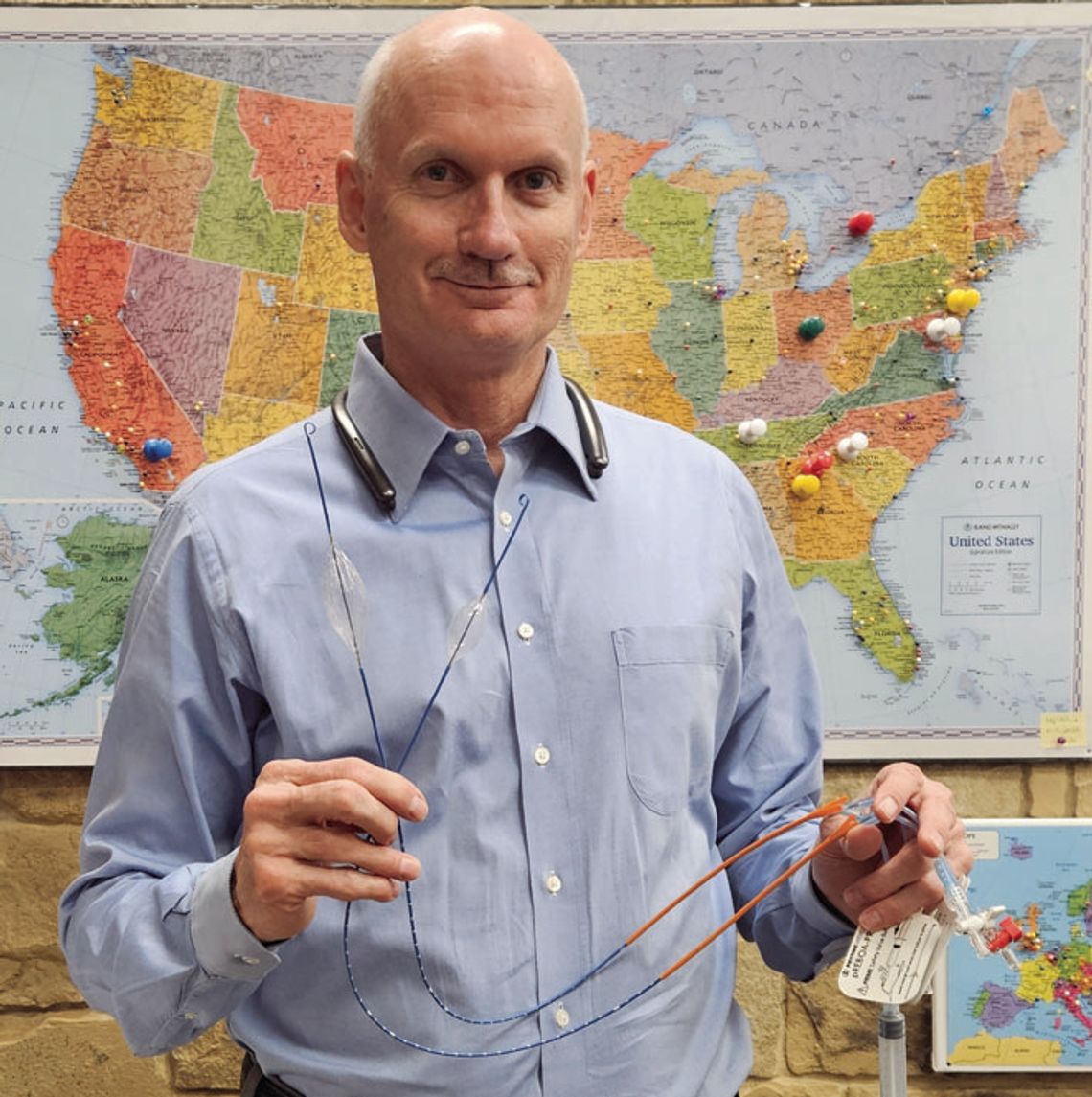The Prytime Medical Devices of Boerne office looks like any other non-descript business park occupant. A single sign adorns the outer brick wall of the one-story suite on Upper Balcones Road.
But inside, one will find “The Wall of Saves” — and see the device that’s saving lives on Ukrainian battlefields.
“We’ve had 15,000 uses of our device but we’re not allowed to talk about any of our patients,” said David Spencer, president and CEO of Prytime, pointing to about two dozen photos pinned on a Prytime wall. “These are all different patients that have been saved by our device.”
A skiing accident. Traumatic pregnancy complication. Motorist in a mangled vehicle. School shooting victim. Freak agricultural augur accident. These are victims, now smiling, who have the REBOA to thank for saving their lives.
REBOA is the Resuscitative Balloon Occlusion of the Aorta, now on its third rendition since its introduction in 2016.
Spencer said the REBOA basically stops war or accident victims from “bleeding out” before they receive help or can be transported to a hospital or surgeon.
The REBOA features a “balloon” on the end of a catheter. The catheter is inserted in the groin area and moved through arteries toward the aorta.
Once in place, the balloon is inflated, temporarily stopping the flow of blood. The balloon stops the bleeding, allowing time for definitive repair.
REBOA was created in 2006. Two wartime U.S. surgeons grew frustrated after a soldier, who had lost both legs to an improvised explosive device in Iraq, bled out while they tried to repair large gashes to his chest and abdominal region.
“They were determined to save his life, but couldn’t,” Spencer said. “They knew there had to be a better way to do it.

“It all sounds gruesome. But ... REBOA stops all the blood flow, and keeps whatever blood you have left, right in here,” he said, thumping his fist on his chest cavity, “and it keeps you alive.”
Prytime started manufacturing the device in 2011 “and it took us five years to perfect the first device. We got the first one out there at the very end of 2016.”
The first device had its flaws, however. Version no. 2, once inserted, now gave physicians or surgeons about a half-hour to operate or save a life.
But doctors told Spencer that they still did not have enough time. The Prytime crew went back to work and created version no. 3, released in 2021.
Version 3 (pREBOA-PRO) now offers a four-hour window in which to work in an emergency room, at the scene — or in foxholes in war-torn, battle-ravaged Ukraine. Spencer and his crew made 10 separate trips to the Ukraine and to Israel following the Oct. 7 Hamas attack.
In Israel, Spencer’s crew trained 100-plus civilian and military doctors in seven hospitals.
In the Ukraine, Prytime trained more than 500 civilian, military and intelligence service doctors in 21 hospitals in 11 cities — and several in classified, far-forward undisclosed locations.
In the U.S. and Israel, doctors take the vital information back to their teams and instruct them on use of REBOA. In the Ukraine, “doctors ... were out in the field within two hours, already using them,” he said.
Prytime donated 50 of the $5,000 devices to Ukrainian physicians. When Ukrainian officers saw the devices in use, they were convinced.
“Their wartime need far outstrips our ability to manufacture,” Spencer said. “Senior Ukrainian generals have requested 1,000-plus catheters, in writing.”
The U.S. military intelligence, surveillance and reconnaissance has studied its use, he said, and is now expediting emergency war time approval of REBOA.
“These wars have accelerated the pace of learning for future U.S. combat wounded, which is saving lives back home right now,” he said.
Saving the shooting victim. And the motorcyclist. And the skier. And the mother and her baby – none of whom would have made it without a REBOA.










Comment
Comments